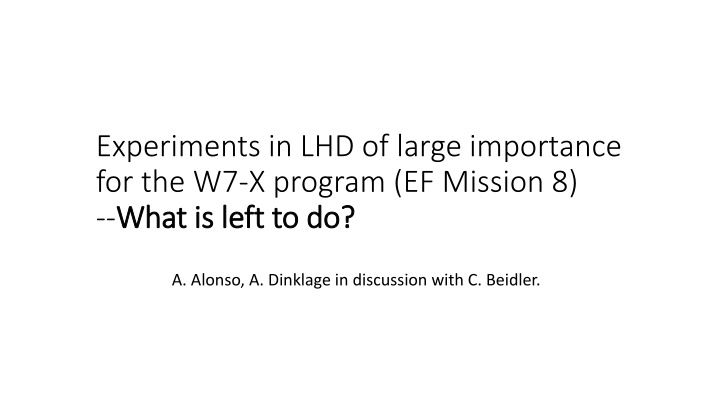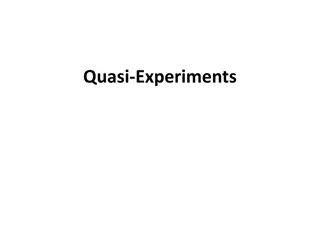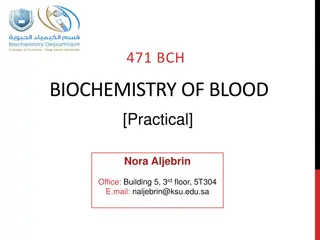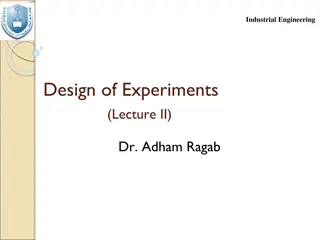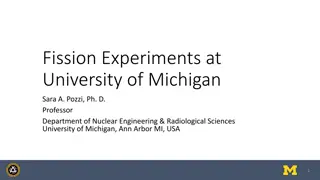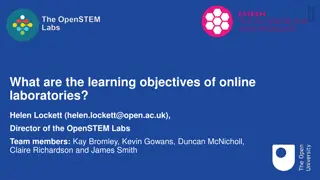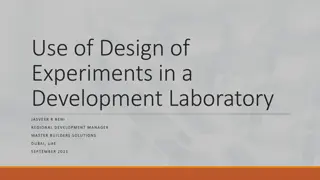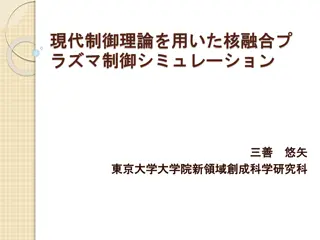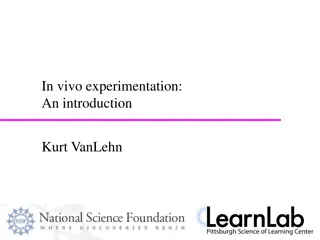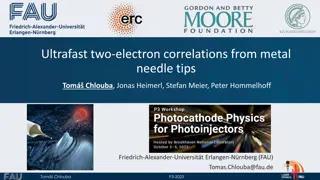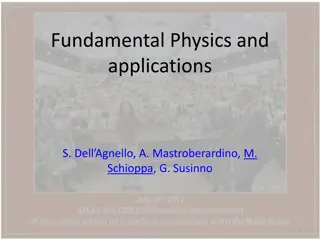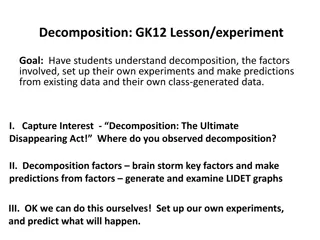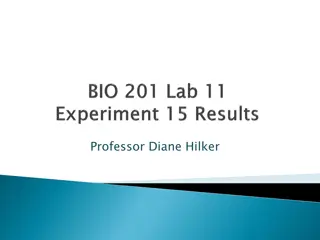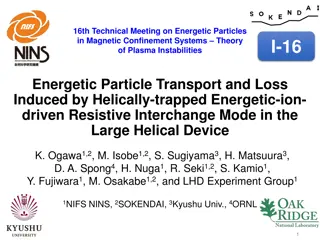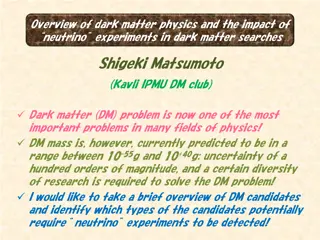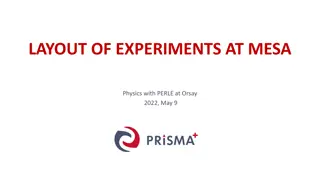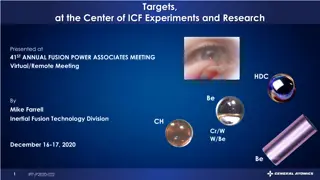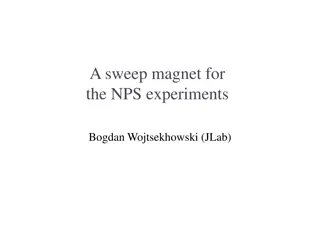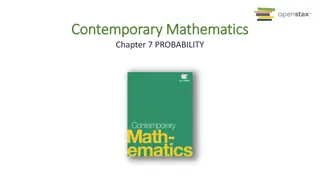LHD Experiments in W7-X Program
This presentation discusses the importance of LHD experiments for the W7-X program, highlighting areas such as high-beta, low collisionality regimes, plasma sustainment, and operational limits characterization.
Download Presentation

Please find below an Image/Link to download the presentation.
The content on the website is provided AS IS for your information and personal use only. It may not be sold, licensed, or shared on other websites without obtaining consent from the author.If you encounter any issues during the download, it is possible that the publisher has removed the file from their server.
You are allowed to download the files provided on this website for personal or commercial use, subject to the condition that they are used lawfully. All files are the property of their respective owners.
The content on the website is provided AS IS for your information and personal use only. It may not be sold, licensed, or shared on other websites without obtaining consent from the author.
E N D
Presentation Transcript
Experiments in LHD of large importance for the W7-X program (EF Mission 8) --What is left to do? What is left to do? A. Alonso, A. Dinklage in discussion with C. Beidler.
Motivation and purpose of this presentation LHD is a mature stellarator, comparable to W7-X in size and parameters, that might be approaching its shut-down. The accumulated body of knowledge from LHD is of enormous value for a young project like W7-X. The following question appears timely and necessary: Are there blanks in that body of knowledge of particular importance for the WPW7X that we could fill in the coming years? In these slides we point out some of the areas of particular importance where additional experiments could be proposed. Disclaimer: an exhaustive revision of the scientific literature needs to be conducted to assess the degree of completion of each area.
Access to high beta low collisionality regimes at reduced field. According to the energy confinement scalings, it should be possible to achieve FFHR2m2 beta/nu values in LHD at 1T with P=22MW and ne=5e19. The experiment should target those values and examine confinement degradation and or MHD activity that prevents from achieving the expected values. Description One the of milestones of M8 in FP9 is the high-beta, low-collisionality W7-X operation. With the foreseeable increase of heating power this appears mots likely at reduced field (1.7T). LHD has operated at 1T with ~4% beta but only high-nu. The identification of obstacles to achieve high-beta/low- nu and whether or not they are Heliotron-specific is important. Relevance for M8 Ref. https://doi.org/10.1088/1741-4326/aa65aa
Start-up and plasma sustainment at reduced field Produce and characterise a plasma with ICRH, aiming at values that could provide a adequate plasma for subsequent NBI and/or ECRH X3 plasma sustainment. Description See previous slide. Relevance for M8 Ref.
Characterisation and physics description of operational limits Identify the causes of the several operational boundaries in LHD (radiation, currents/MHD, heating...) and its implication for the W7-X. (Also the absences of limits otherwise expected on theoretical grounds!). Description In today's devices, the most limiting operational boundary is the density or "Sudo" limit, which is related to the radiative power balance with low-Z (C, O) impurities with peripheral radiation. This limit is however or lesser importance in a burning plasmas with strong self-heating and different wall elements. A more profound physics understanding is required for extrapolation. The relevance of MHD boundaries (saw-teeth, core density collapse) for W7-X needs to be elucidated. Relevance for M8 Ref. https://doi.org/10.1109/TPS.2017.2784380
Pellet Fuelling and Particle transport in high-n, high-T regimes Characterise and model (NC + turbulent) the pellet fueling and particle transport in LHD. Description Considerable uncertainty exist about the extrapolation of density profiles to reactor scenarios. It is generally considered necessary to have central pellet fuelling, but the particle deposition and transport are not well understood. The LHD offers the diagnostic and modelling capabilities to characterise particle transport. Relevance for M8 Ref. https://doi.org/10.13182/FST10-A10795
EMC3/ERIENE modeling of LHD edge-SOL-divertor and detachment. Validate the EMC3/EIRENE code in LHD with dedicated PWI studies. Study the importance of drifts, particularly in detached conditions with an without seeding. The validation of the div-sol model is required for the posterior validation of erosion- depositinon-migration tools like EROV2. Description The SOL regions of LHD and W7-X are quite different as are their divertors. The differences are such that they preclude any direct comparison without a sofiticated edge/sol modeling. The differences, on the other hand, offer good conditions for the validation of the Eruopean code EMC3/EIRENE. Detachment access conditions, physics (e.g. volumetric recombination not observed in W7-X, required diffusivity coefficients) should be a primary focus of the validation. Relevance for M8 Ref. http://dx.doi.org/10.1088/0029-5515/55/10/104021
Characterisation and modeling of the operation conditions of benign impurity transport and source control (screening). Diagnose the relevant edge and core plasma parameters in regimes of edge screening and high NBI power to pursue validation of the edge (EMC3) and core (NC+Turbulent) impurity dynamics and transport. Investigate the importance of asymmtries in the impurity transport for its potential instrumentalisation. Description Impurity accumulation is often regarded as the Achiles heel of stellarators. LHD has meticulously explored the parameter space and the accumulation properties on the plasmas (see reference). Regions of core and edge screening have been identified. Recently, the combination of NBI torque and Ti gradients has been claimed to strongly suppress accumualtion. The understanding of the strategies to avoid accumulation and their extrapolation to reactor conditions should be pursued. Relevance for M8 Ref. https://doi.org/10.1088/1741-4326/aa6187
ASCOT validation against LHD ICHR and NBI generated fast ions. Application of similar diagnostic and simualtion tools in LHD and W7-X aimed at the validation of ASCOT. Description LHD has illustrated a general agreement between experiments and expectations of the effect of the magnetic configuration on fast particle confinement. Detailed analysis of the FI loss pattern, Alfv n wave interactions are scarce. Is LHD fast ion confinement regareded sufficient in FFHR2m2 high and low density scenarios? Relevance for M8 Ref. https://doi.org/10.13182/FST10-A10800
LHD call for proposals now open --------------------------------------------------------------- 22nd Experimental Campaign Schedule June 12 start submission of experiment proposal June 30 deadline of submission of experiment proposal Oct. 15 start experiment Feb. 18 end experiment For more information, please contact your counter person or Dr. Yasuhiro Suzuki (e-mail: suzuki.yasuhiro@nifs.ac.jp ).
